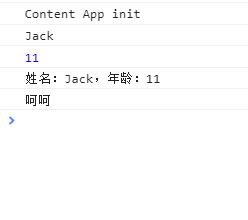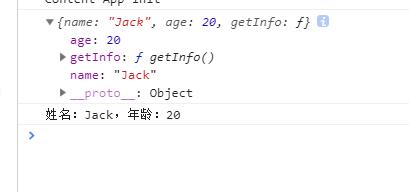
es6模块export import
es6模块
概述
在 ES6 前, 实现模块化使用的是 RequireJS 或者 seaJS(分别是基于 AMD 规范的模块化库, 和基于 CMD 规范的模块化库)。
ES6 引入了模块化,其设计思想是在编译时就能确定模块的依赖关系,以及输入和输出的变量。
ES6 的模块化分为导出(export) @与导入(import)两个模块。
特点
ES6 的模块自动开启严格模式,不管你有没有在模块头部加上 use strict;。
模块中可以导入和导出各种类型的变量,如函数,对象,字符串,数字,布尔值,类等。
每个模块都有自己的上下文,每一个模块内声明的变量都是局部变量,不会污染全局作用域。
每一个模块只加载一次(是单例的), 若再去加载同目录下同文件,直接从内存中读取。
基本用法:
定义一个export.js
let name = "Jack";
let age = 11;
let func = function(){
return `姓名:${name},年龄:${age}`
}
let myClass = class myClass {
static a = "呵呵";
}
export {name, age, func, myClass}
再搞个html:
<script type="module">
import {name, age, func, myClass} from "./export.js";
console.log(name);
console.log(age);
console.log(func());
console.log(myClass.a );
</script>
注意 type是module;

as 的用法
默认的话,导出的和导入的名称是一样;一般的话也这么干,不过假如要改成名称,搞个别名,我们用as来搞;
<script type="module">
import {name as myName, age as myAge, func as MyFunc, myClass as mC} from "./export.js";
console.log(myName);
console.log(myAge);
console.log(MyFunc());
console.log(mC.a );
</script>
运行效果一样;
export default 命令
在一个文件或模块中,export、import 可以有多个,export default 仅有一个。
export default 中的 default 是对应的导出接口变量。
通过 export 方式导出,在导入时要加{ },export default 则不需要。
export default 向外暴露的成员,可以使用任意变量来接收。
最简单的,到处一个变量:
let name = "Jack";
export default name
因为导出是单个,花括号省略;
<script type="module">
import name from "./export.js";
console.log(name);
</script>
导入的地方,花括号也省略;
一般开发,比如vue,导出的是一个组件对象;
我们新建一个student.js
export default {
name:'Jack',
age:20,
getInfo(){
return `姓名:${this.name},年龄:${this.age}`
}
}
<script type="module">
import student from "./student.js";
console.log(student);
console.log(student.getInfo())
</script>

下一篇:vue slot插槽


- Java核心基础(145)
- QQ第三方登录(6)
- mybatis-plus(20)
- Mycat(30)
- Layui(2)
- Mysql(2)
- Docker(35)
- Dubbo(7)
- 007项目(0)
- SVN(22)
- SpringCloud(33)
- Tomcat(6)
- 支付宝接口(3)
- NodeJs(1)
- IDEA(24)
- SpringBoot(11)
- 微信扫码登录(4)
- Git(50)
- Nginx(24)
- Vue.js(50)
- jsoup(6)
- shiro(1)
- Redis(17)
- maven(6)
- 活动(20)
- hibernate(1)
- EhCache缓存框架(4)
- webservice(10)
- CAS单点登录(7)
- elasticsearch(31)
- log4j日志(8)
- IT之路(26)
- activiti(26)
- centos(25)
- java爬虫技术(14)
- 随心生活(19)
- 网站SEO(2)
- htmlunit(10)
- httpclient(7)
- 2022年12月(1)
- 2021年10月(1)
- 2021年02月(3)
- 2020年11月(3)
- 2020年10月(4)
- 2020年09月(7)
- 2020年08月(18)
- 2020年07月(21)
- 2020年06月(37)
- 2020年05月(17)
- 2020年04月(12)
- 2020年03月(10)
- 2020年02月(14)
- 2020年01月(12)
- 2019年12月(15)
- 2019年11月(27)
- 2019年10月(5)
- 2019年09月(1)
- 2019年08月(4)
- 2019年07月(28)
- 2019年06月(16)
- 2019年05月(4)
- 2019年04月(3)
- 2019年03月(2)
- 2019年02月(7)
- 2019年01月(20)
- 2018年12月(2)
- 2018年11月(5)
- 2018年10月(30)
- 2018年09月(11)
- 2018年08月(5)
- 2018年07月(9)
- 2018年06月(4)
- 2018年05月(4)
- 2018年04月(3)
- 2018年03月(7)
- 2018年02月(6)
- 2018年01月(13)
- 2017年12月(3)
- 2017年11月(10)
- 2017年10月(1)
- 2017年09月(9)
- 2017年08月(12)
- 2017年07月(19)
- 2017年06月(21)
- 2017年05月(1)
- 2017年04月(12)
- 2017年03月(13)
- 2017年02月(12)
- 2017年01月(14)
- 2016年12月(8)
- 2016年11月(25)
- 2016年10月(16)
- 2016年09月(13)
- 2016年08月(20)
- 2016年07月(12)
- 2016年06月(36)
- 2016年05月(10)
- 2016年04月(19)
- 2016年03月(14)
- 2016年02月(23)
- 2016年01月(1)